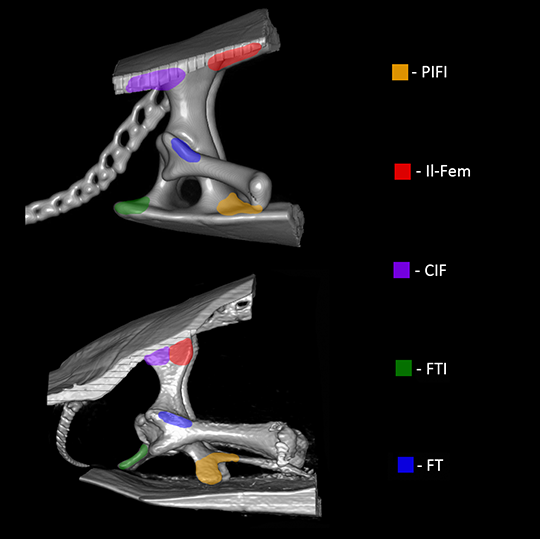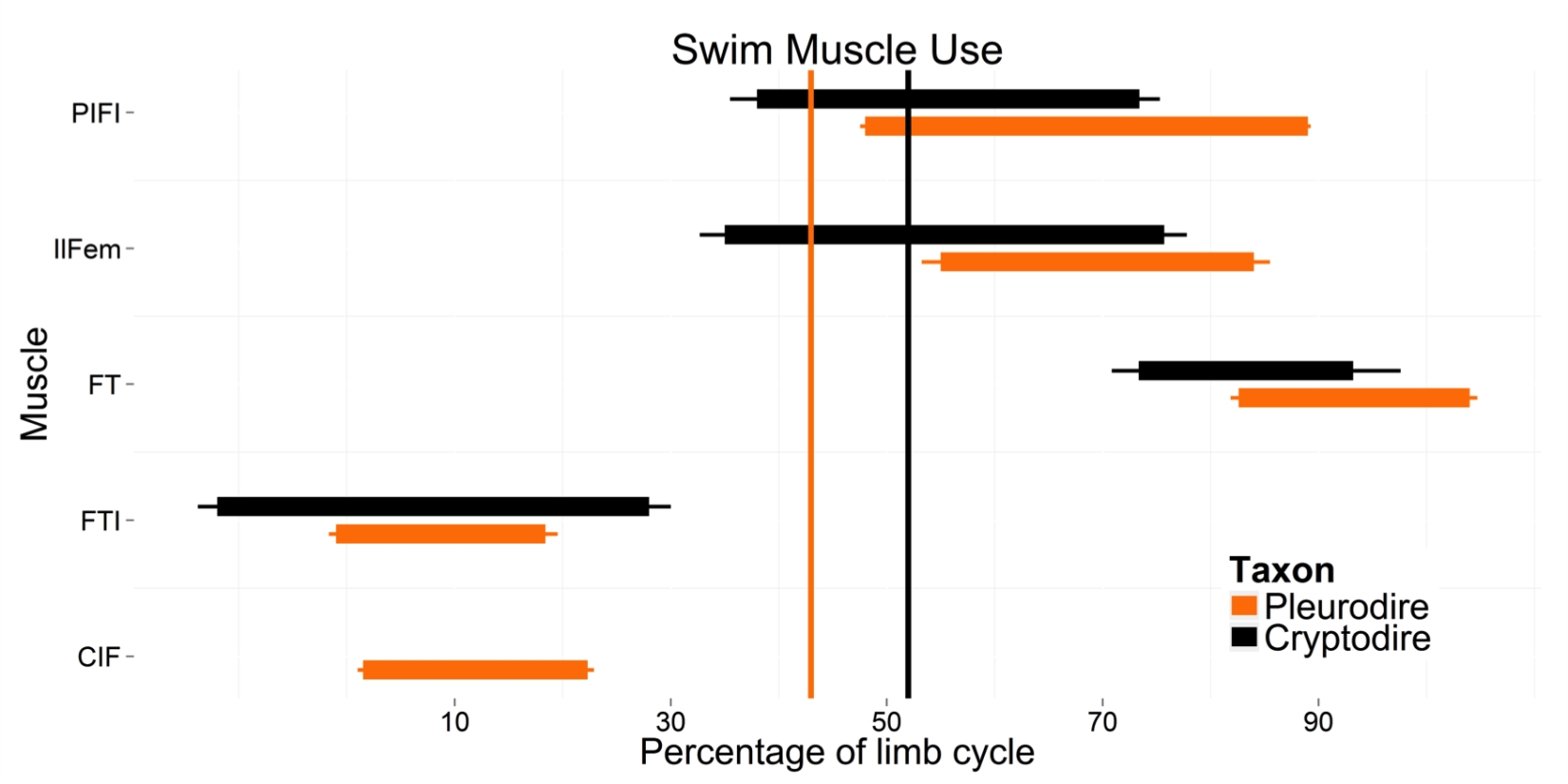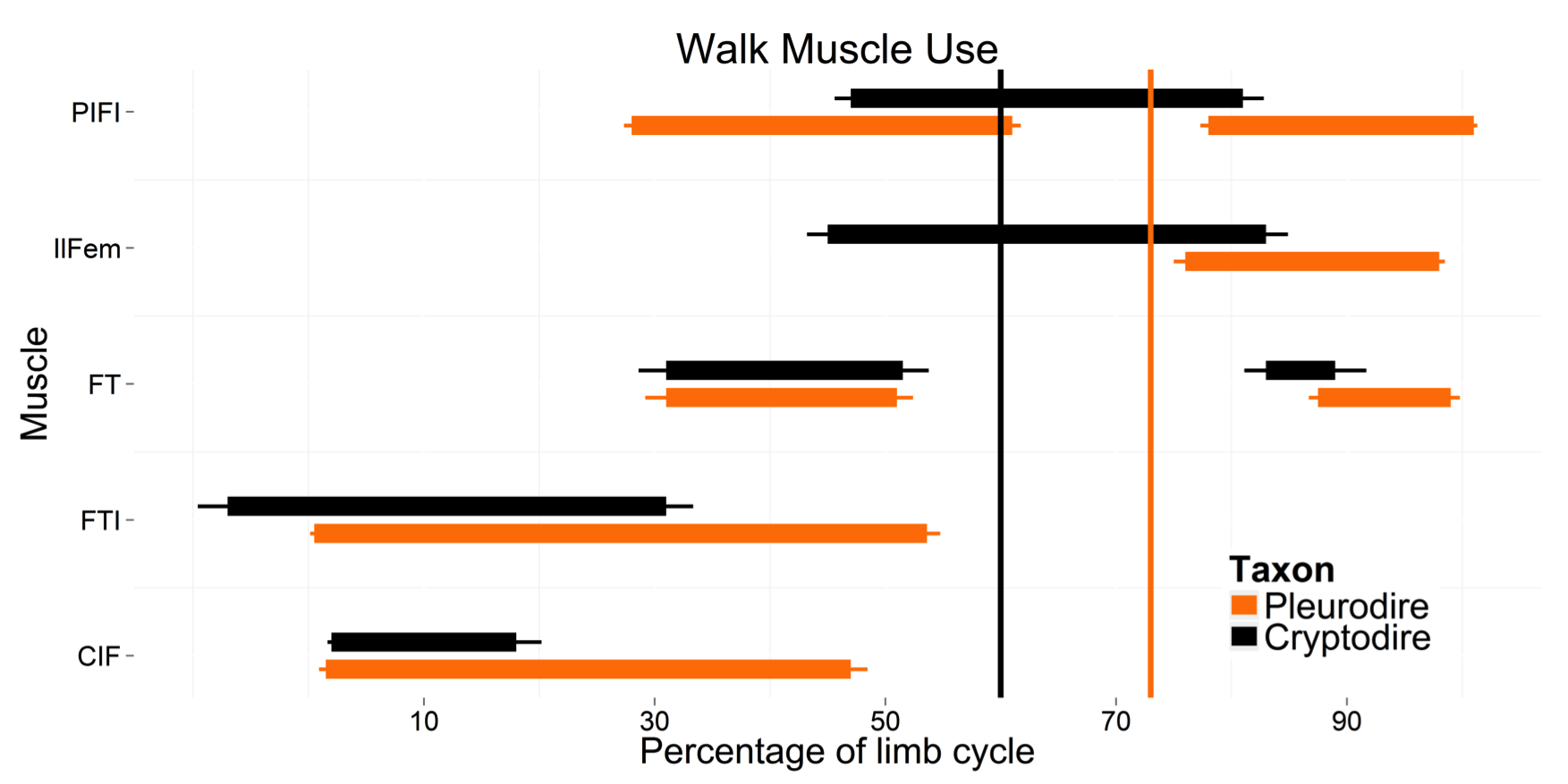Motor Patterns of the Hind Limb Muscles of Pleurodire Turtles: Correlations Between Changes in Muscle Attachments and Activity
Jenna E. Pruett1, Christopher J. Mayerl1, Angela R. V. Rivera2, Richard W. Blob1
132 Long Hall, Department of Biological Sciences, Clemson University, Clemson, SC, 29634
2Department of Biology, Creighton University, Omaha, NE, 68178
Objective
- To determine the effects of differing muscle attachments on the control of swimming and walking in two lineages of turtles.
- Turtles can be divided into two major lineages: Pleurodires and Cryptodires. All Pleurodires are primarily aquatic species, whereas cryptodires consist of species inhabiting either environment.
- One of the derived characteristics of pleurodires is the fusion of the pelvis to the shell (Walker 1973). This novel skeletal morphology leads to differing muscle attachment locations in the two groups.
- Neuromotor conservation states that structure is more likely to change than muscle use (Smith 1994); here we examine the possibility that changes in muscle origination could lead to changes in muscle function and use.
Acknowledgments: We thank Sigma Xi (GIAR) and CU Creative Inquiry (Grant # 479) for funding. Erika Tavares (Brown University) Assisted with CT scans. All procedures followed CU IACUC protocol #2013 – 051.
Methods
- Motor patterns for 5 hind limb muscles with novel origins (shell instead of pelvis) were measured by EMG (5000Hz collection, 30 Hz – 6000 Hz bandpass filter) during swimming and walking in pleurodire turtles (Emydura subglobosa, N = 6).
- Focus muscles included two hip protractors (puboischiofemoralis internus (PIFI) and iliofemoralis (IlFem)), two hip retractors (caudo-ilio femoralis (CIF) and flexor tibialis internus (FTI)) and one knee extensor (femorotibialis (FT)).
- Lateral and ventral view video (100 Hz) synchronized kinematics with EMGs.
Results
- For both taxa, protraction was greater while walking than while swimming. Pleurodires have more femoral depression, especially while walking.
- Motor patterns were similar between taxa for swimming, but differed during walking, particularly for protractors, which were active later in pleurodires. Specifically, pleurodires exhibited a novel burst in PIFI.
Conclusions
- The aquatic nature of these species could explain the similarities in muscle activation during swimming. Walking differences may be driven by changes in muscle origination.
- EMG differences during walking occurred primarily in hip protractors.
- PIFI exhibits a novel burst during stance in walking pleurodires, which may contribute to the greater stance phase adduction seen in this group.
Future Directions
- Dissections to better specify how structural differences in limb muscles (cross sectional area and moment arms) may affect locomotor function between taxa.
Literature cited:
- Blob R. W., Rivera A. R. V., & Westneat M. W. 2008. Hindlimb function in turtle locomotion. In Biology of Turtles. Boca Raton: CRC Press, 139-162.
- Smith, K. K. 1994. Are neuromotor systems conserved in Evolution? Brain Behavior Evolution 43: 293-305.
- Walker, W. F. Jr. 1973. The locomotor apparatus of testudines. Biology of the Reptilia 4:1-100. Academic Press, New York.




